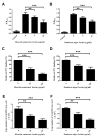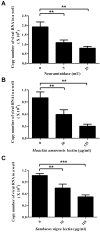Cell surface sialylation affects binding of enterovirus 71 to rhabdomyosarcoma and neuroblastoma cells
- PMID: 22853823
- PMCID: PMC3478995
- DOI: 10.1186/1471-2180-12-162
Cell surface sialylation affects binding of enterovirus 71 to rhabdomyosarcoma and neuroblastoma cells
Abstract
Background: Enterovirus 71 (EV71) is a major causative agent of hand-foot-and-mouth disease (HFMD), and infection of EV71 to central nerve system (CNS) may result in a high mortality in children less than 2 years old. Although there are two highly glycosylated membrane proteins, SCARB2 and PSGL-1, which have been identified as the cellular and functional receptors of EV71, the role of glycosylation in EV71 infection is still unclear.
Results: We demonstrated that the attachment of EV71 to RD and SK-N-SH cells was diminished after the removal of cell surface sialic acids by neuraminidase. Sialic acid specific lectins, Maackia amurensis (MAA) and Sambucus Nigra (SNA), could compete with EV71 and restrained the binding of EV71 significantly. Preincubation of RD cells with fetuin also reduced the binding of EV71. In addition, we found that SCARB2 was a sialylated glycoprotein and interaction between SCARB2 and EV71 was retarded after desialylation.
Conclusions: In this study, we demonstrated that cell surface sialic acids assist in the attachment of EV71 to host cells. Cell surface sialylation should be a key regulator that facilitates the binding and infection of EV71 to RD and SK-N-SH cells.
Figures









References
-
- Ho M. Enterovirus 71: the virus, its infections and outbreaks. J Microbiol Immunol Infect. 2000;33:205–216. - PubMed
Publication types
MeSH terms
Substances
LinkOut - more resources
Full Text Sources
Research Materials
Miscellaneous

